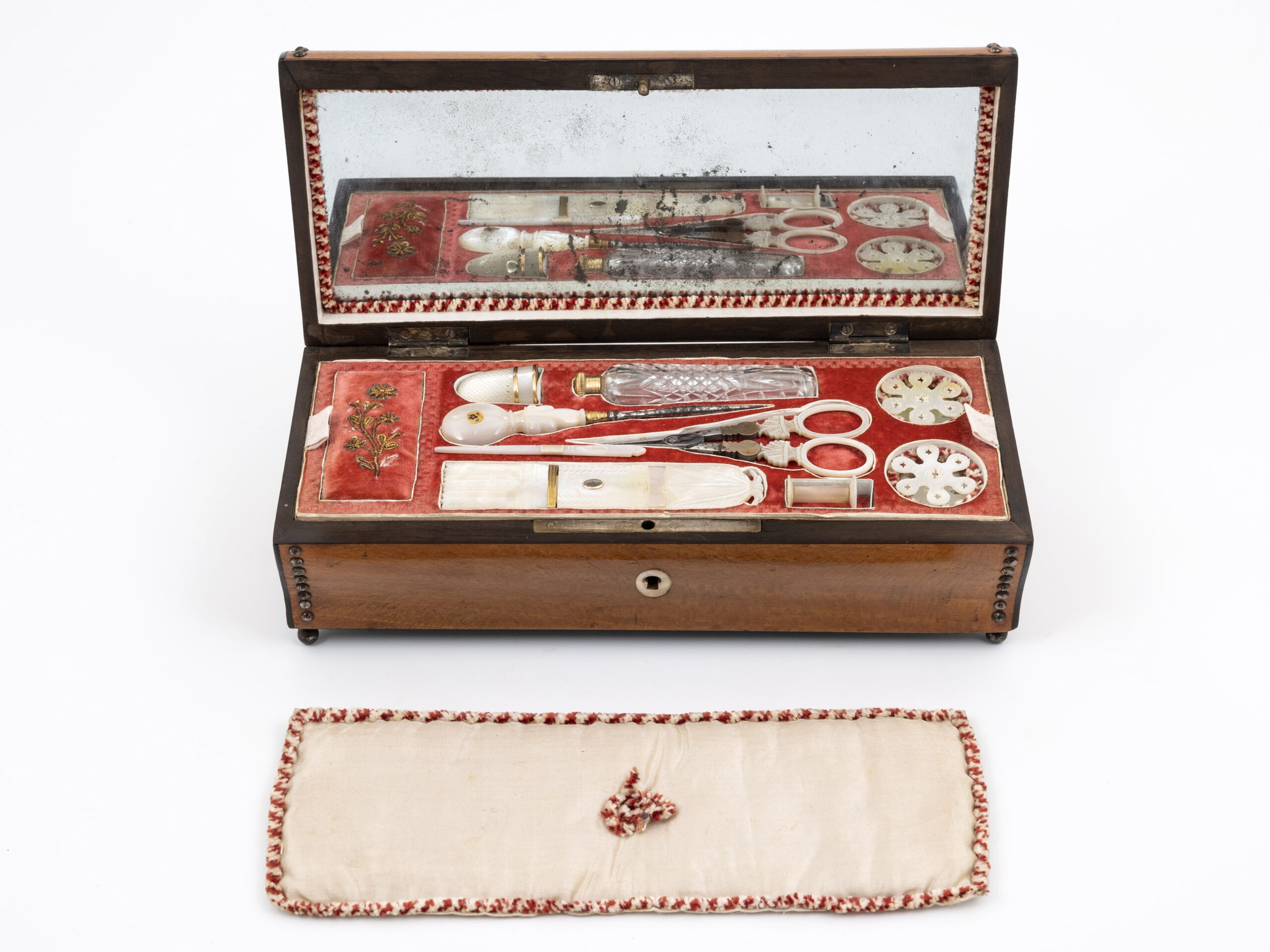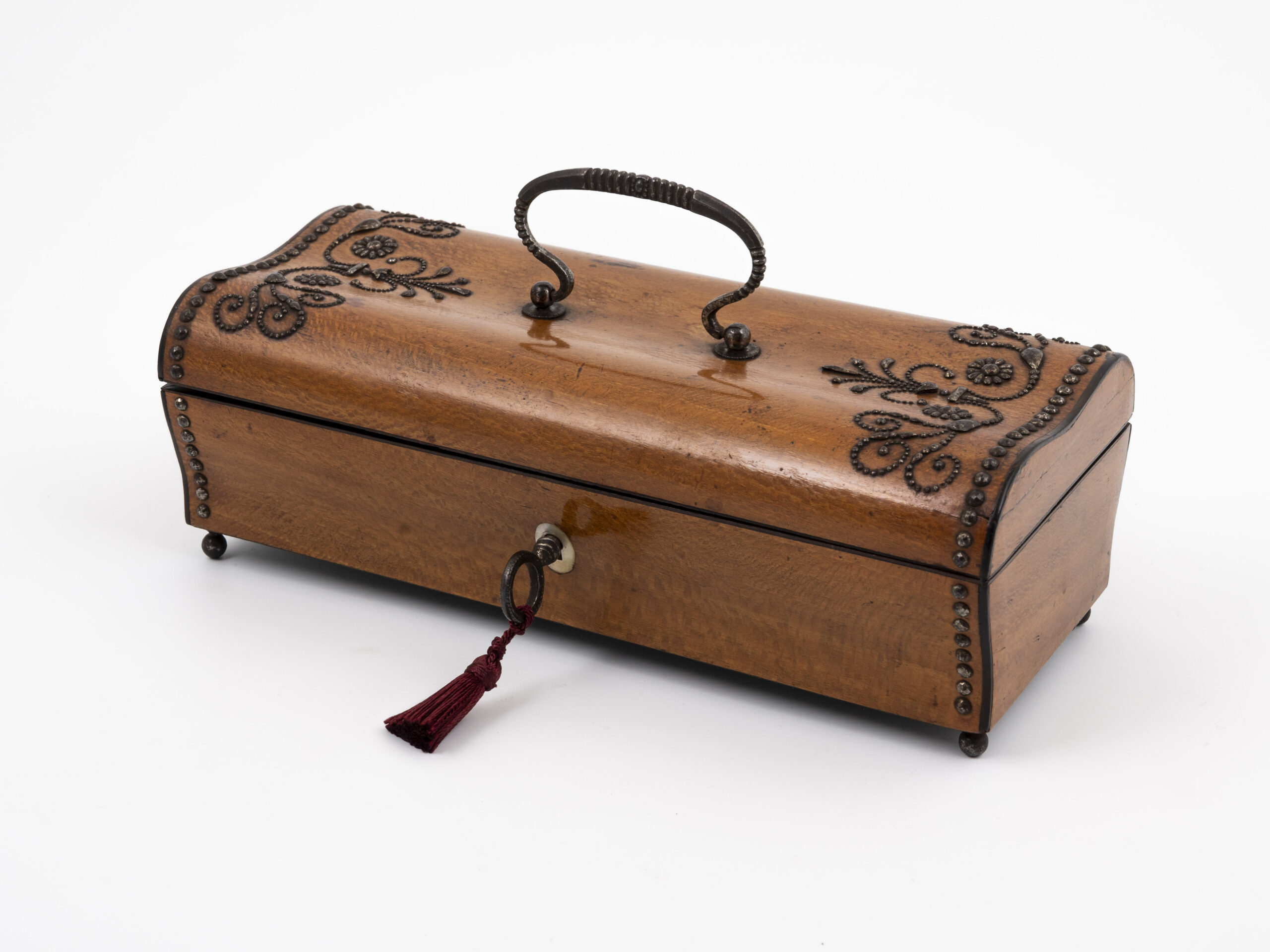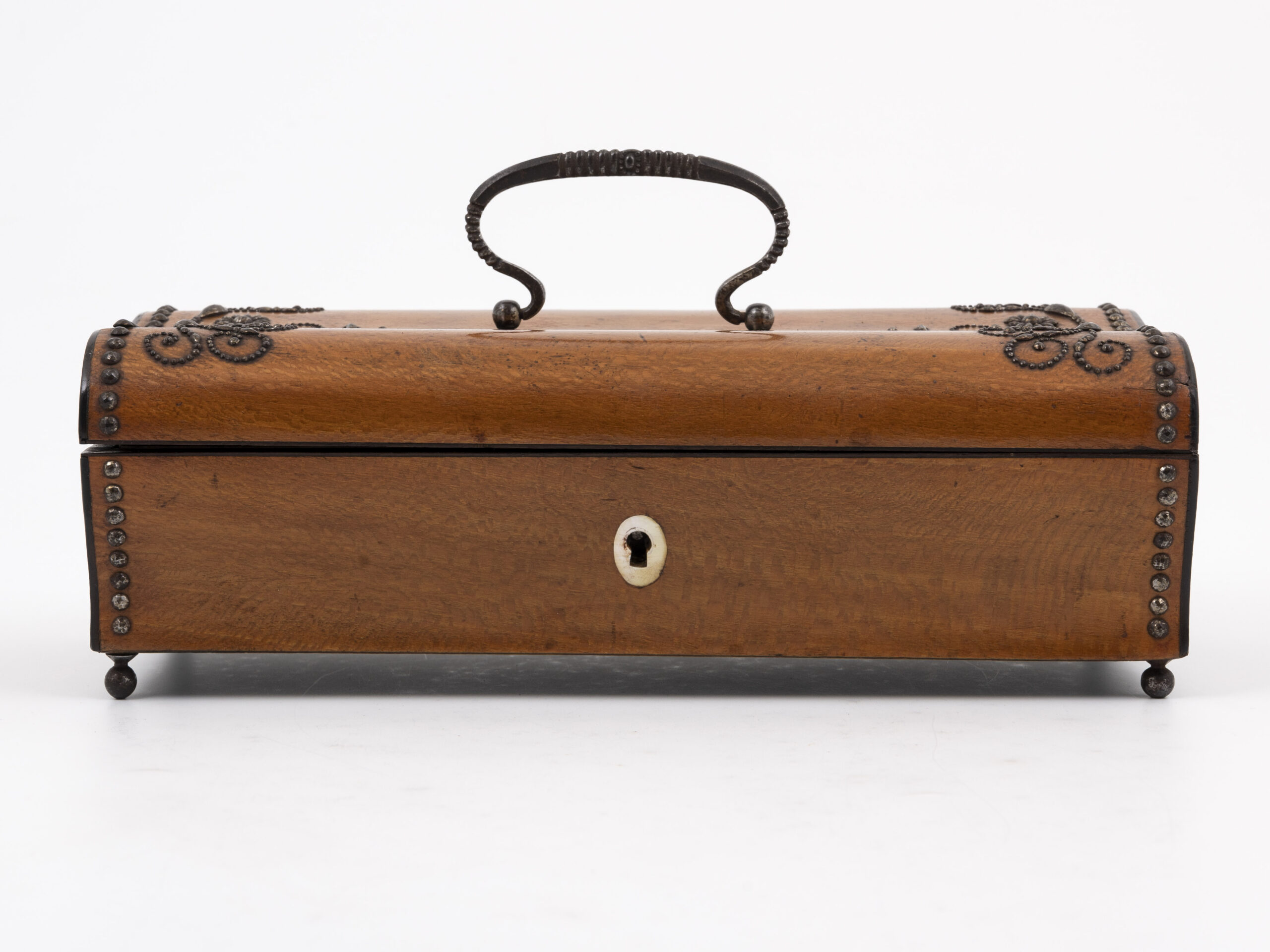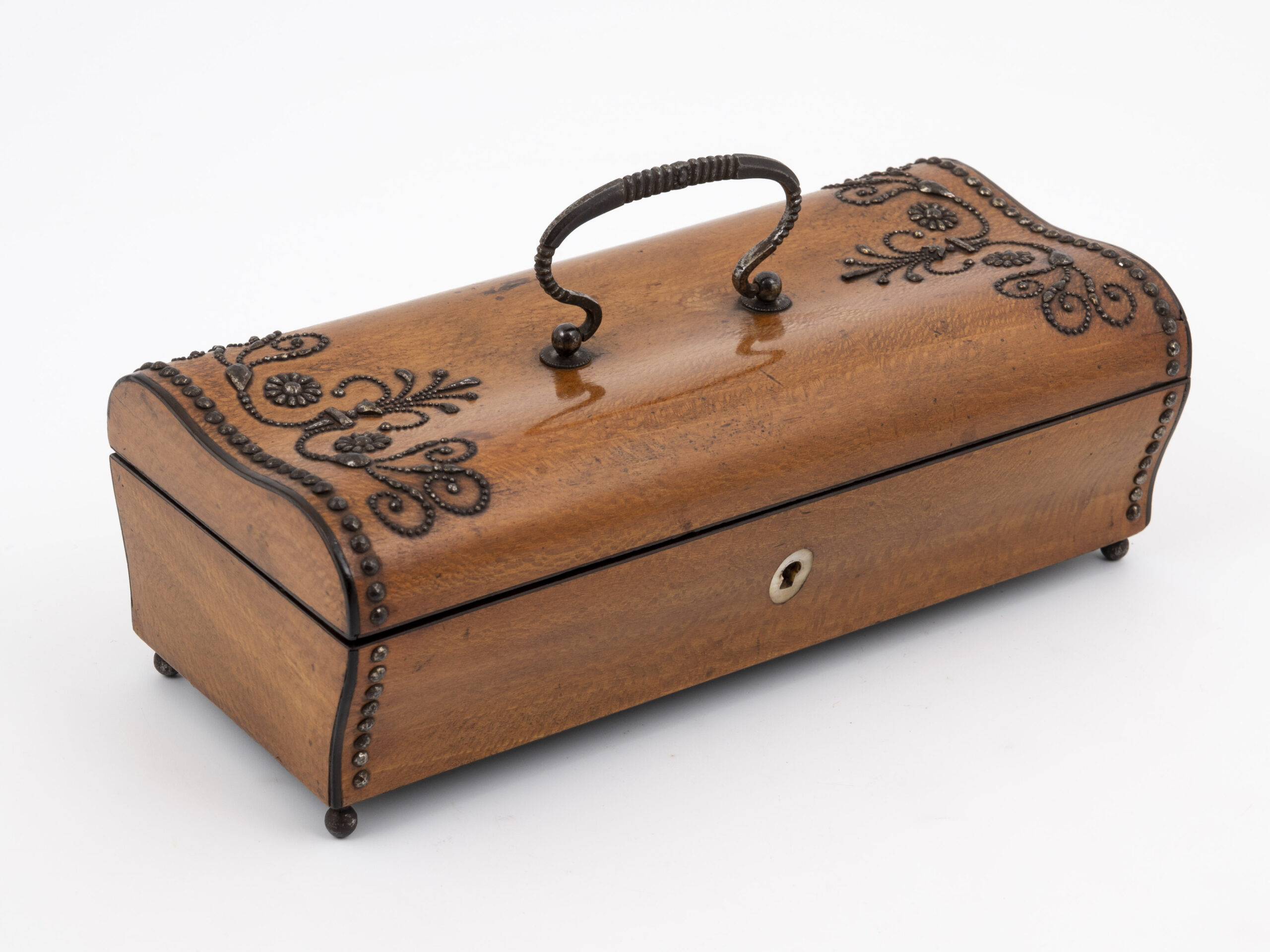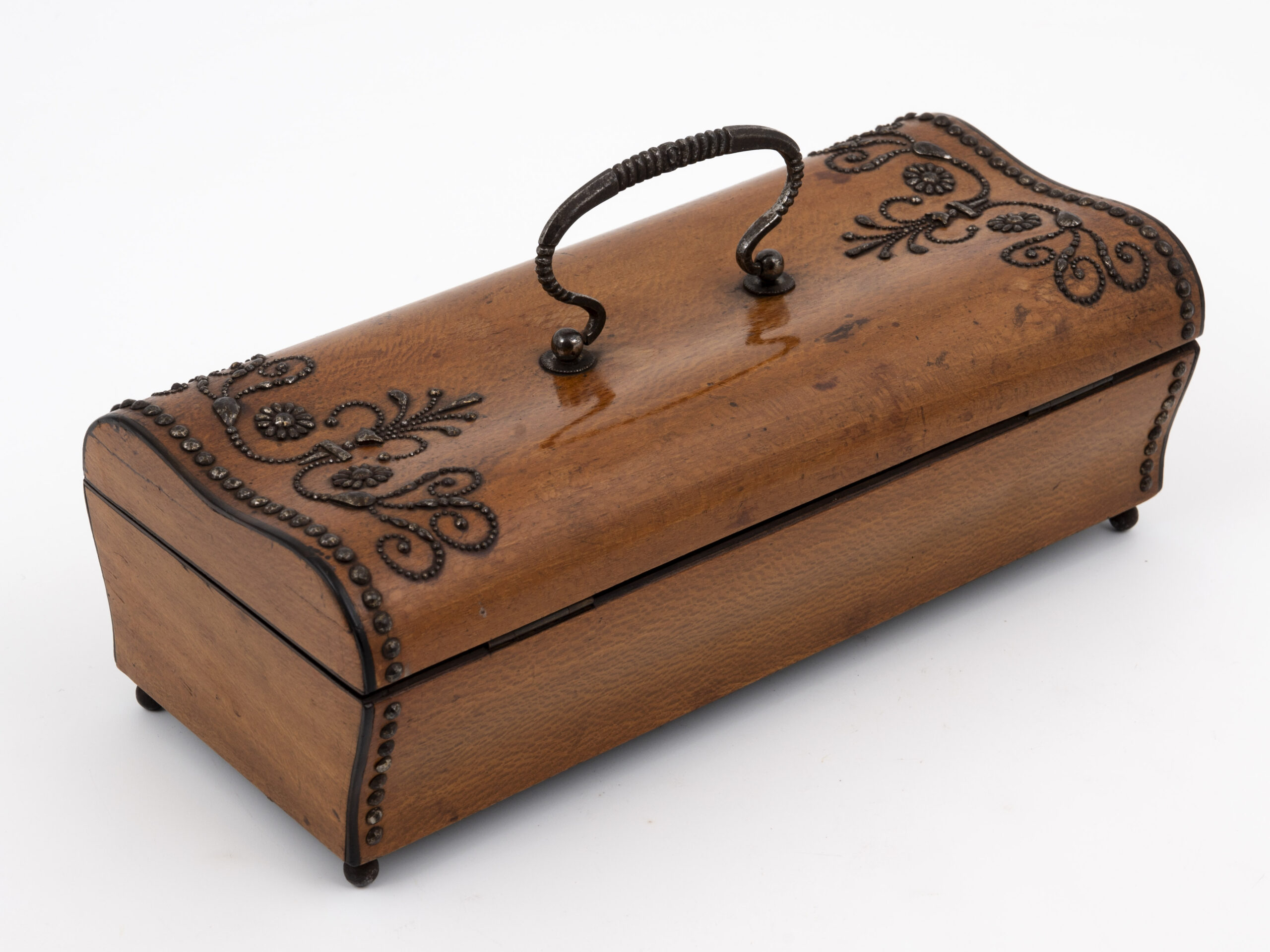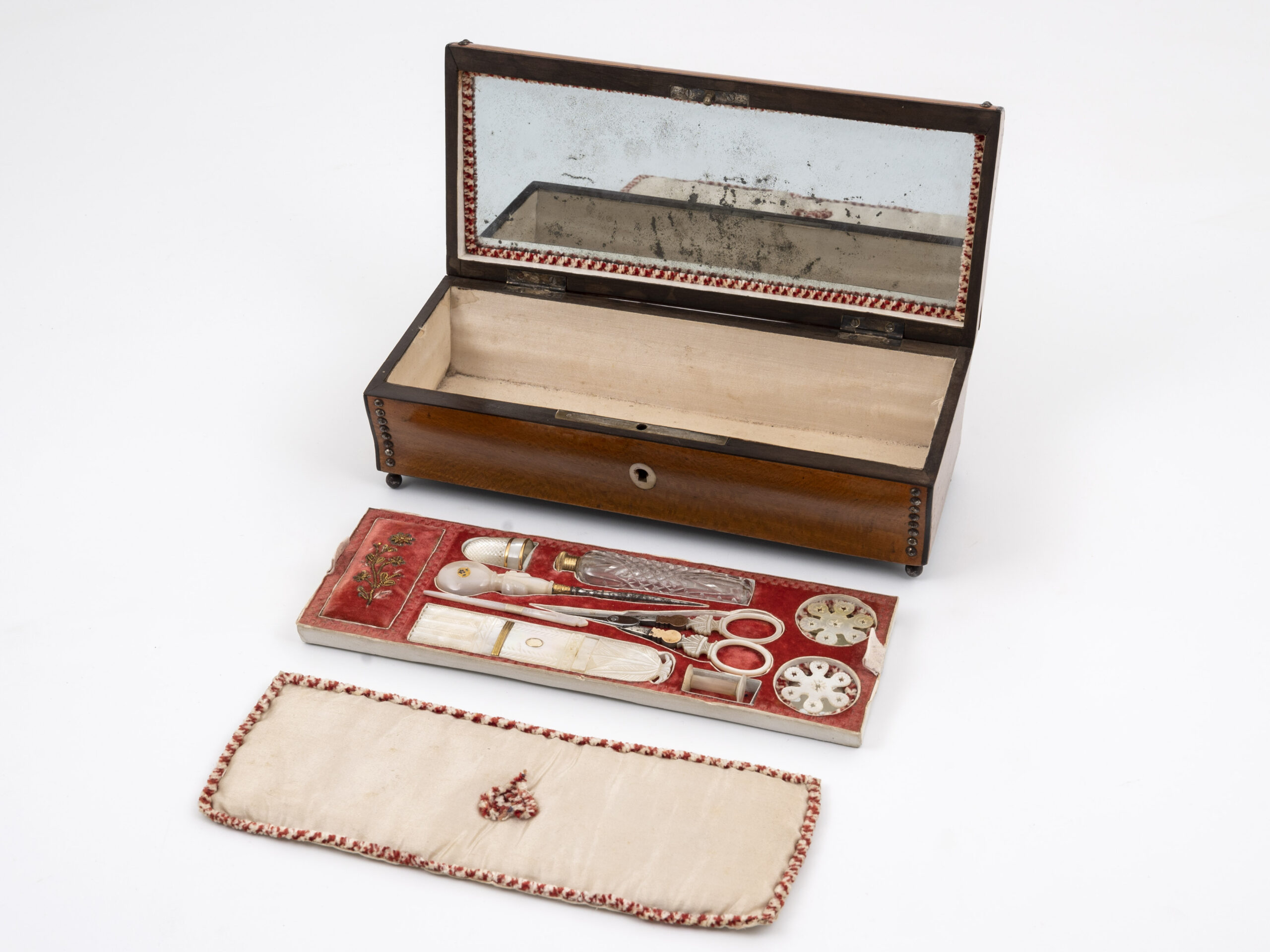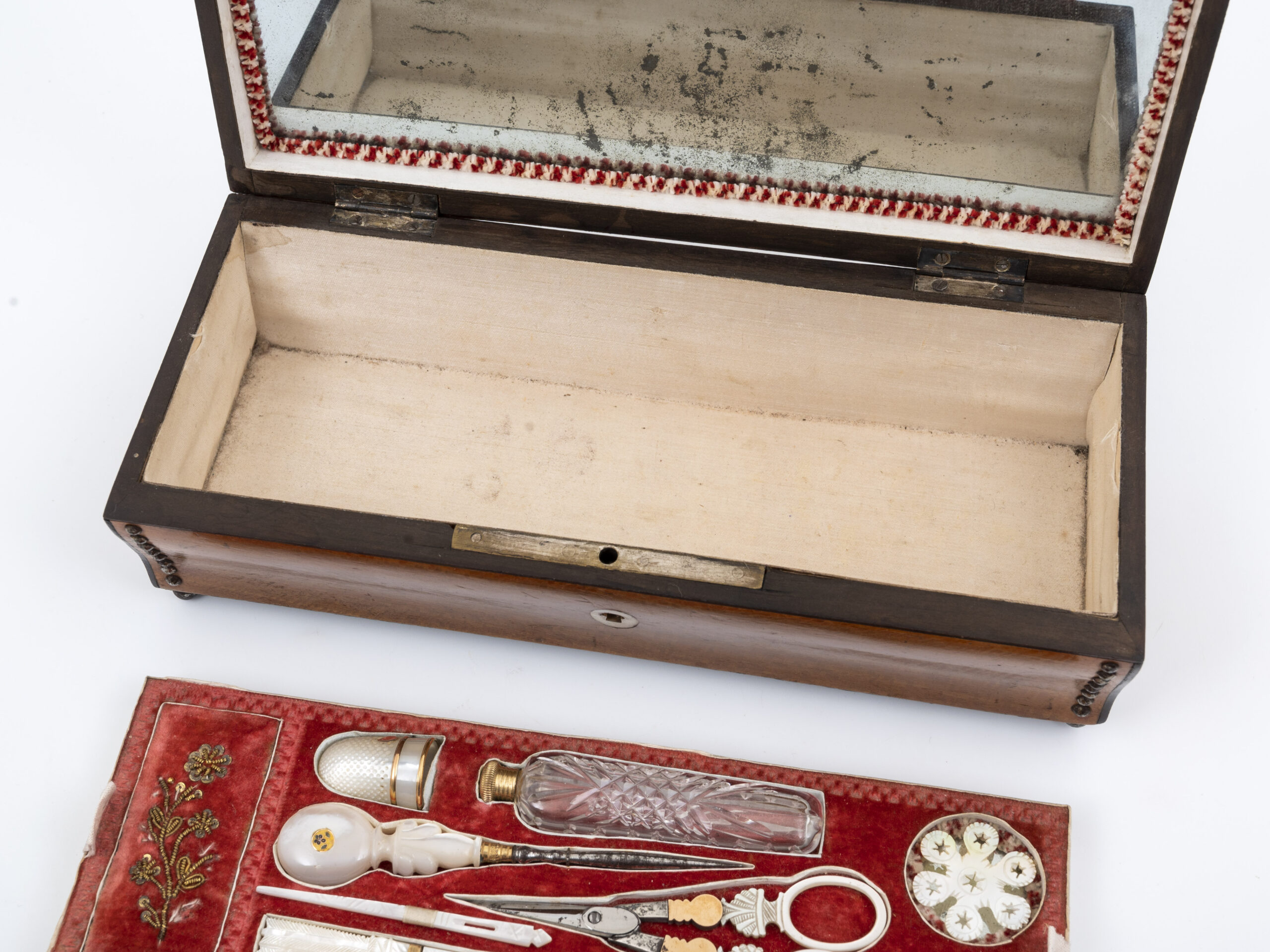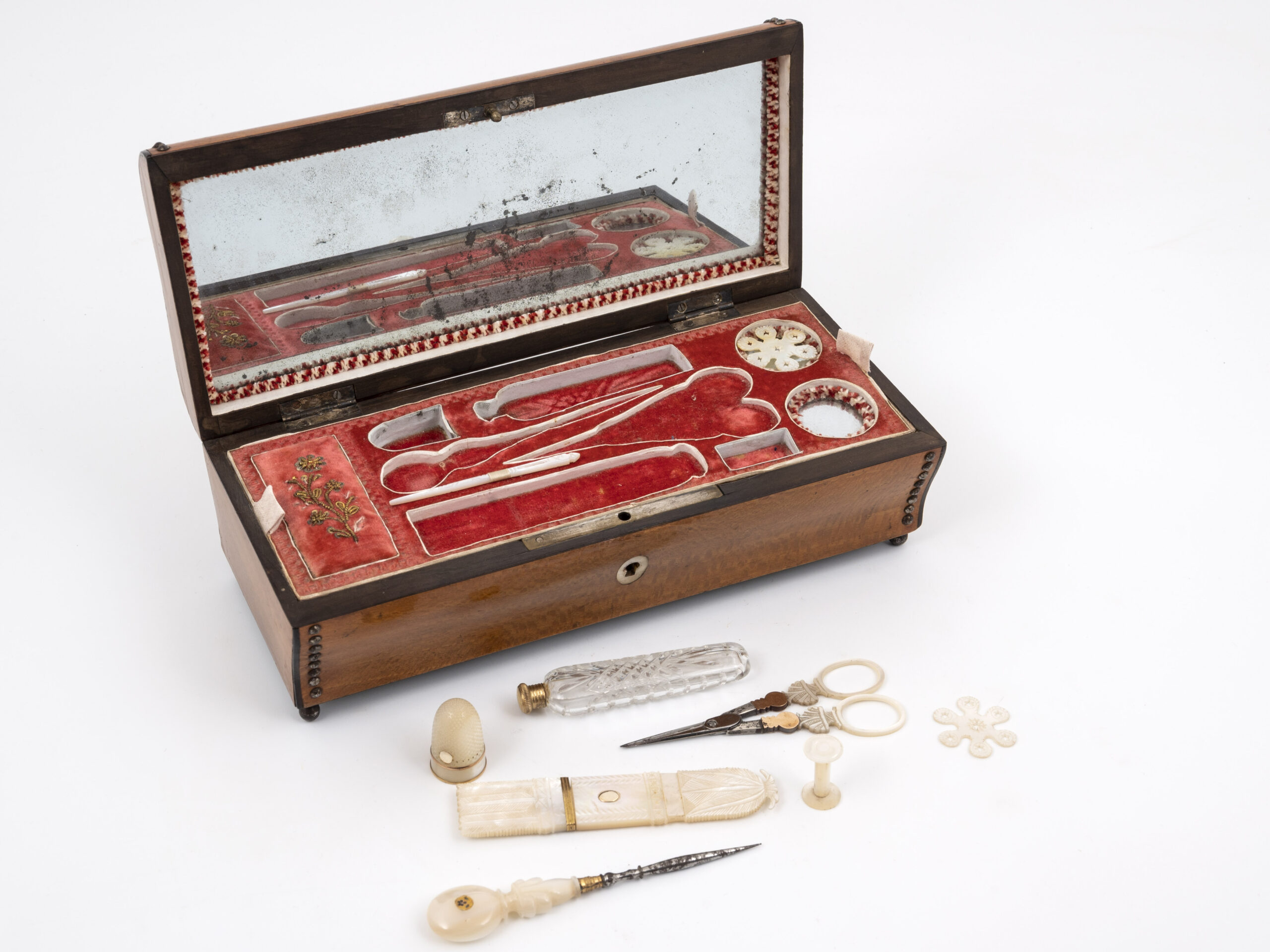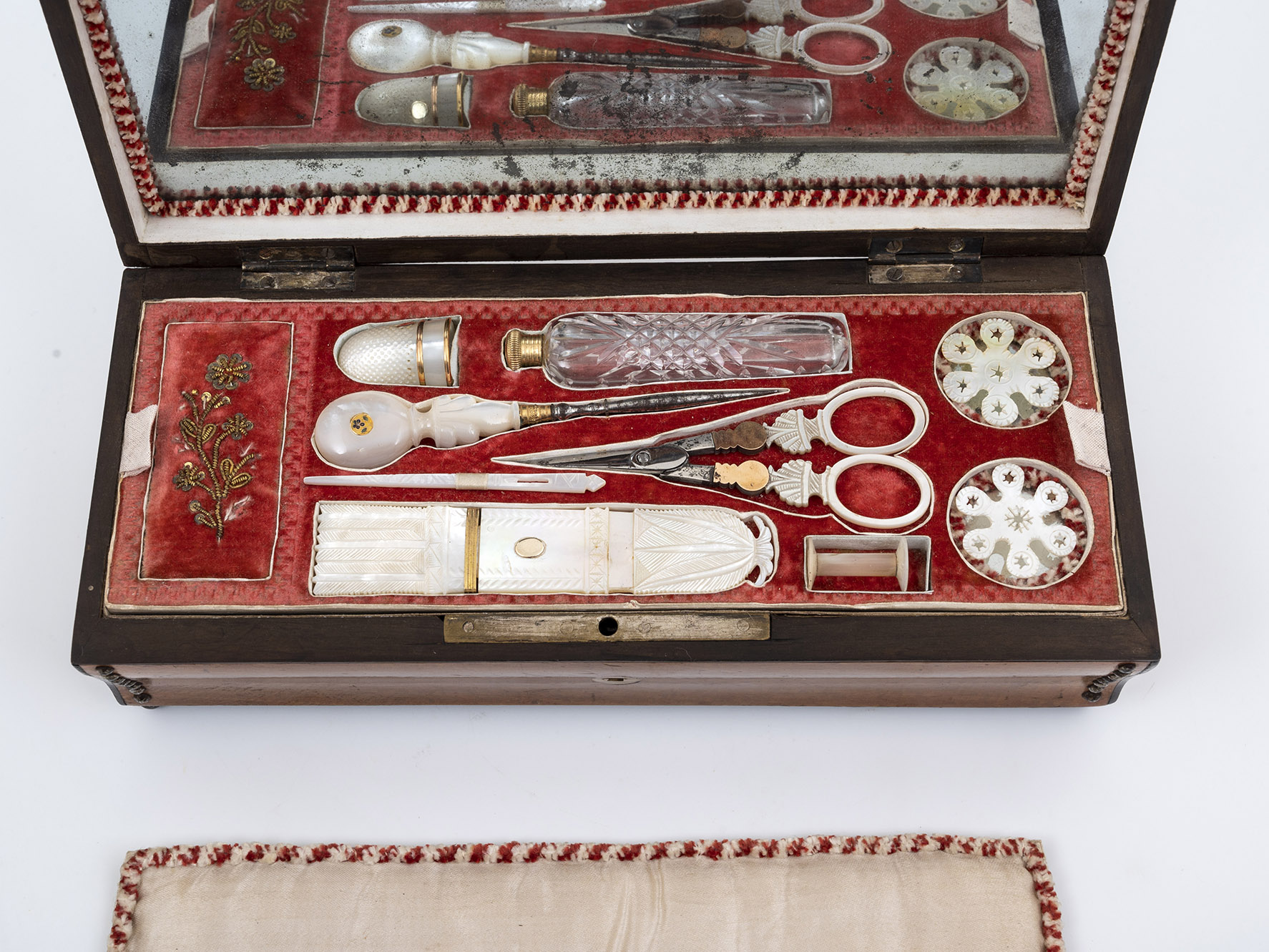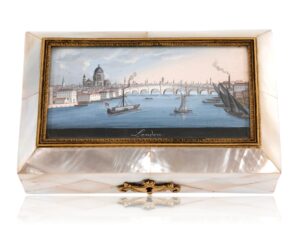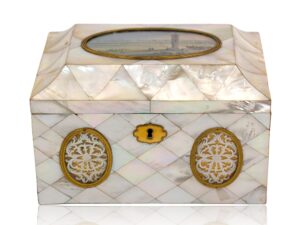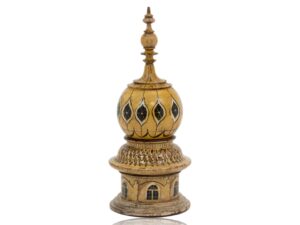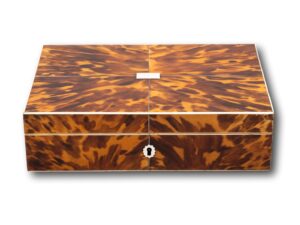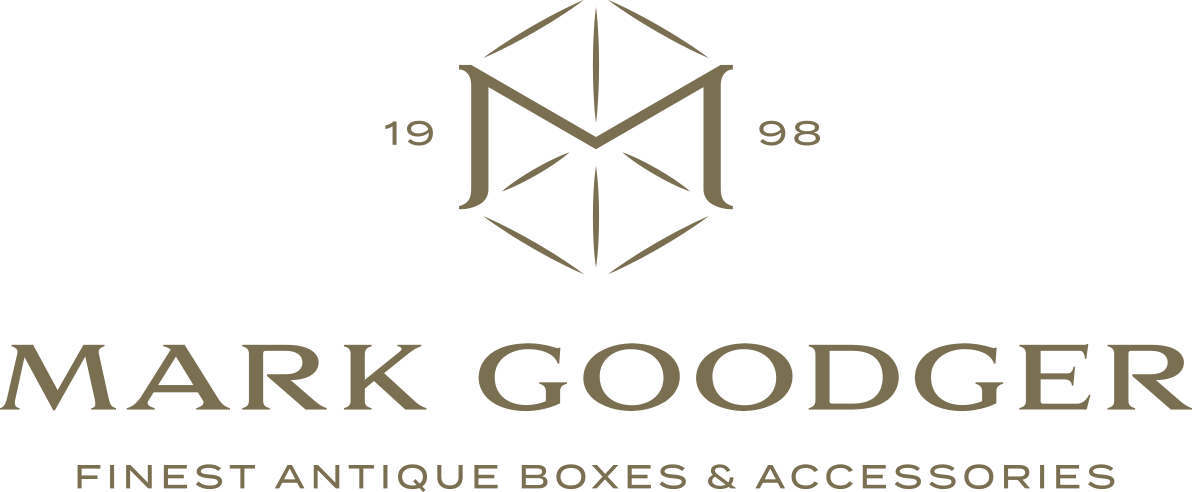Palais Royal Necessaire Sewing Box
SOLD
Fully Fitted with accoutrements within a Lacewood Case From our sewing collection, we are thrilled to offer this Palais Royal 'Necessaire, Etui' Sewing box. Beautifully crafted of Lacewood with a case featuring faceted hand-cut steel pins used to decorate the... Read More
Veneered in Lacewood with Hand Cut Steel Pin Decoration
| Dimensions | 23 × 10.5 × 8 cm |
|---|---|
| Year | |
| Country | |
| Medium | |
| Period | |
| SKU | 501154-TPCE |
Description
Description
Fully Fitted with accoutrements within a Lacewood Case
From our sewing collection, we are thrilled to offer this Palais Royal ‘Necessaire, Etui’ Sewing box. Beautifully crafted of Lacewood with a case featuring faceted hand-cut steel pins used to decorate the exterior of the box which stands upon four steel ball feet. When opened the interior reveals an oxidised pear wood edging surrounding fully fitted and functional sewing kit with multiple accessories including scissors and a glass scent bottle which is removable by two tabs. A close-up of the tools reveals a very fine detailed solid gold pansy decoration with the tools also featuring solid gold accents. The shelf reveals a further storage compartment below and is located below a glass mirror within the lid. The tools are crafted from mother of pearl with finely carved detail.
The antique sewing box is complete with a fully working lock and key
Palais Royal is the collective name of objects that were sold within a Palace in Paris. Originally it was built for Cardinal Richelieu in 1629 and was originally named Palais Cardinal but after the death of Richelieu, it was inherited by King Louis XIII and was named Palais Royal. The palace was later bequeathed to Philippe d’Orléans, a cousin of Louis XVI and in 1781, Philippe d’Orléans, on the verge of financial ruin, decided to subdivide the Palais Royal Garden, which until then had been free of any dwelling. Construction took five years, after which 90 merchants moved in. The area was a popular place for loiterers, betters, pickpockets, and prostitutes. When the revolution ended in 1799 the Palais Royal was refurbished again by Napoleon Bonaparte when he became Emperor in 1804 and it housed galleries and shops selling high quality luxury wares such as this notebook above. It again fell into disrepair when gambling was banned in 1838 but restored in the 1870s. Due to this, there are very few if any pearl Palais Royal objects crafted after 1840.
Lacewood, Planetree or London Plane is found across Europe. Planetree is a creamy yellow colour with a light brown grain. When the log is quarter sliced the veneer is known as Lacewood and is pink-brown in colour. Planetree Burr is a darker brown with very small almost indistinct pips giving it a velvet finish.
Mother of Pearl, Mother of pearl is an organic-inorganic composite material produced by some molluscs as an inner shell layer. It is the same material that natural pearls are made from and is desirable due to its strong and resilient makeup along with its beautiful iridescent shimmer.
Every purchase made from Mark Goodger Antiques is accompanied by a comprehensive suite of documents to ensure your satisfaction and peace of mind. This includes our latest catalogue, a Certificate of Authenticity, detailed care instructions for your chosen item, and an independent invoice for insurance purposes. Additionally, your purchase is protected by our no-hassle, money-back policy, and your item will be fully insured during the shipping process to safeguard against damage or loss.
Additional information
Additional information
| Dimensions | 23 × 10.5 × 8 cm |
|---|---|
| Year | |
| Country | |
| Medium | |
| Period | |
| SKU | 501154-TPCE |
